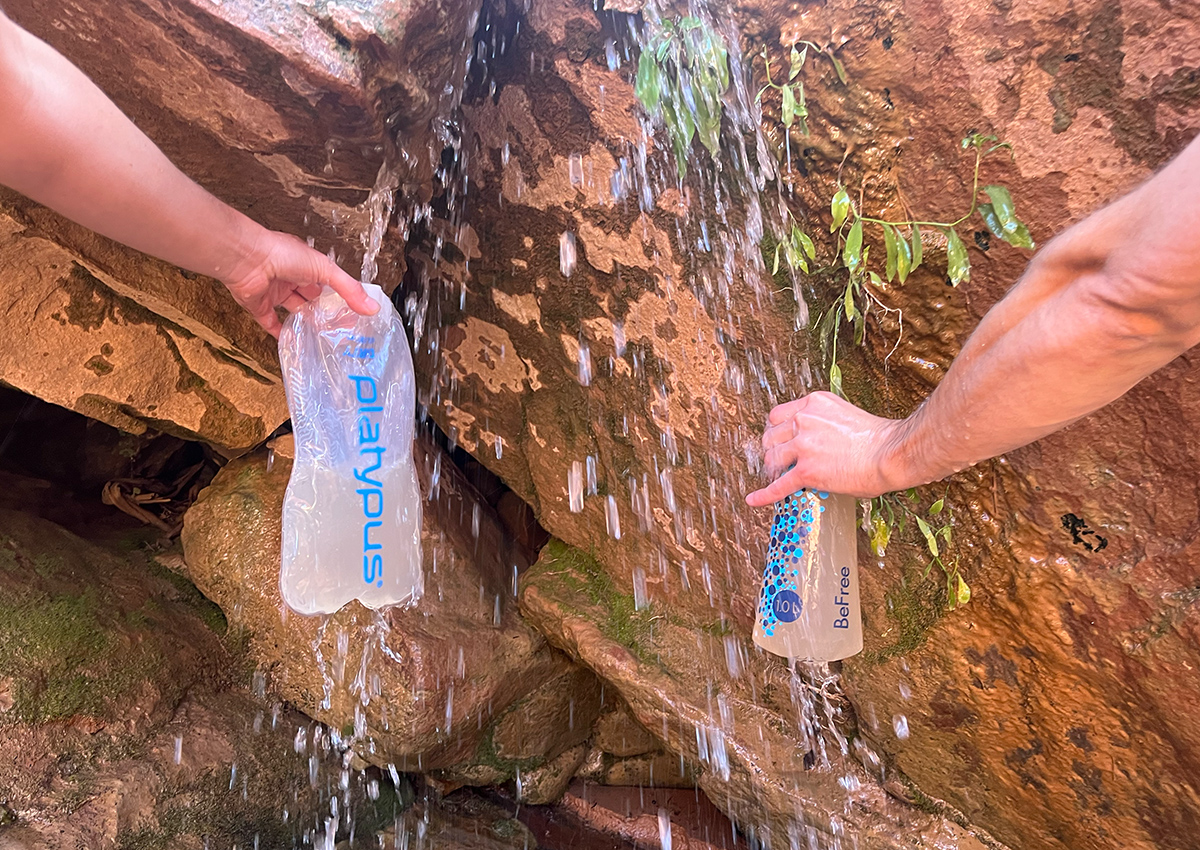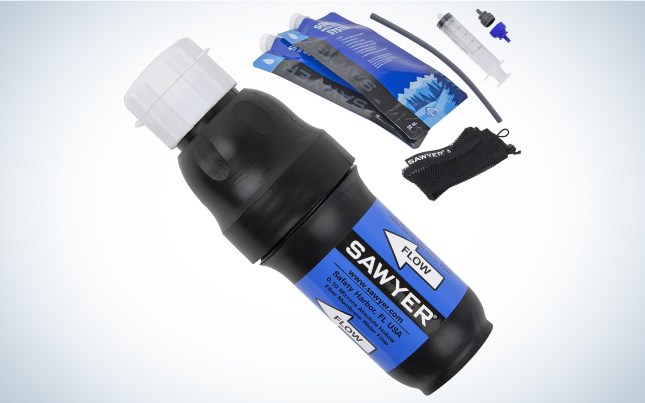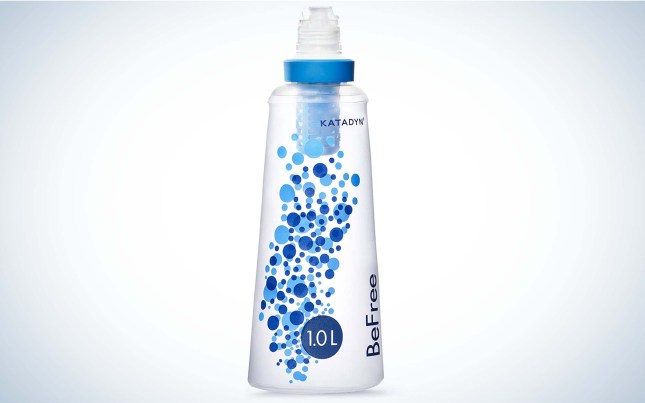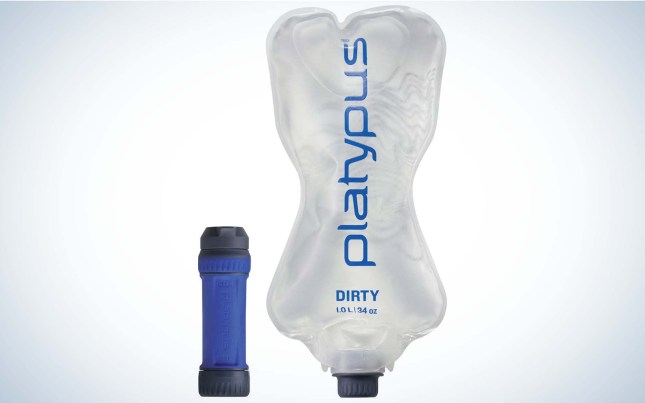We may earn revenue from the products available on this page and participate in affiliate programs. Learn More ›
The Sawyer Squeeze, Katadyn BeFree, and Platypus QuickDraw are competing for the ultimate fast, easy, and lightweight backpacking water filter. They all protect against protozoa and bacteria while filtering out debris and improving taste. You can drink directly from any of these filters or squeeze all of the water into your normal hydration method. Outdoor Life conducted a large-scale review of the best water filters and found these to be the top three backpacking filters. Comparable in weight and speed, what sets these three filters apart is their experiential differences. I tested the Squeeze, BeFree, and QuickDraw while backpacking in the desert to determine how they performed in the field. After filtering both standing and flowing canyon water, here are some of the key differences in their bags, filters, and ease of cleaning to help you make your decision.
Comparing the Water Filter Bags
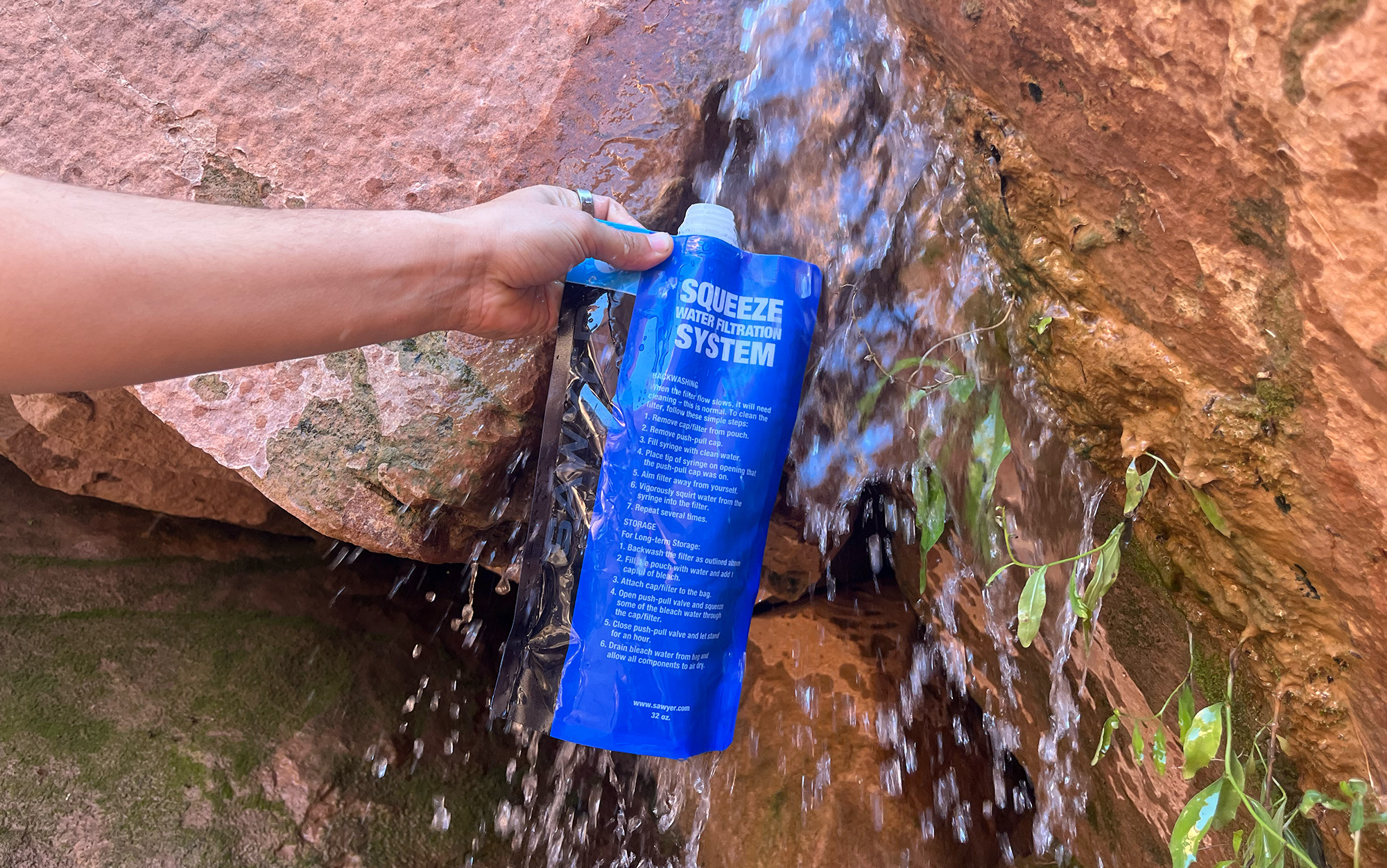
The Sawyer Squeeze won the best value award in OL‘s extensive review of sixteen different water filters, but it also has the best bag. The Squeeze has something of a cult following due to the fact that it was one of the first squeeze bags on the market; and it’s cheap, lightweight, and versatile.
The included bags are sturdy, if annoying to fill up (the secret is to use two hands to keep the bag filled with as much air as possible, submerge, and tilt the bag upward until bubbles appear indicating that the bag is quickly filling with water). You can avoid this issue by using a SmartWater bottle. However, I prefer the bag because it is easy to fold to ensure every drop of water is filtered out, with the added benefit of it being extremely packable. It also stands well on its own compared to others that I tested.
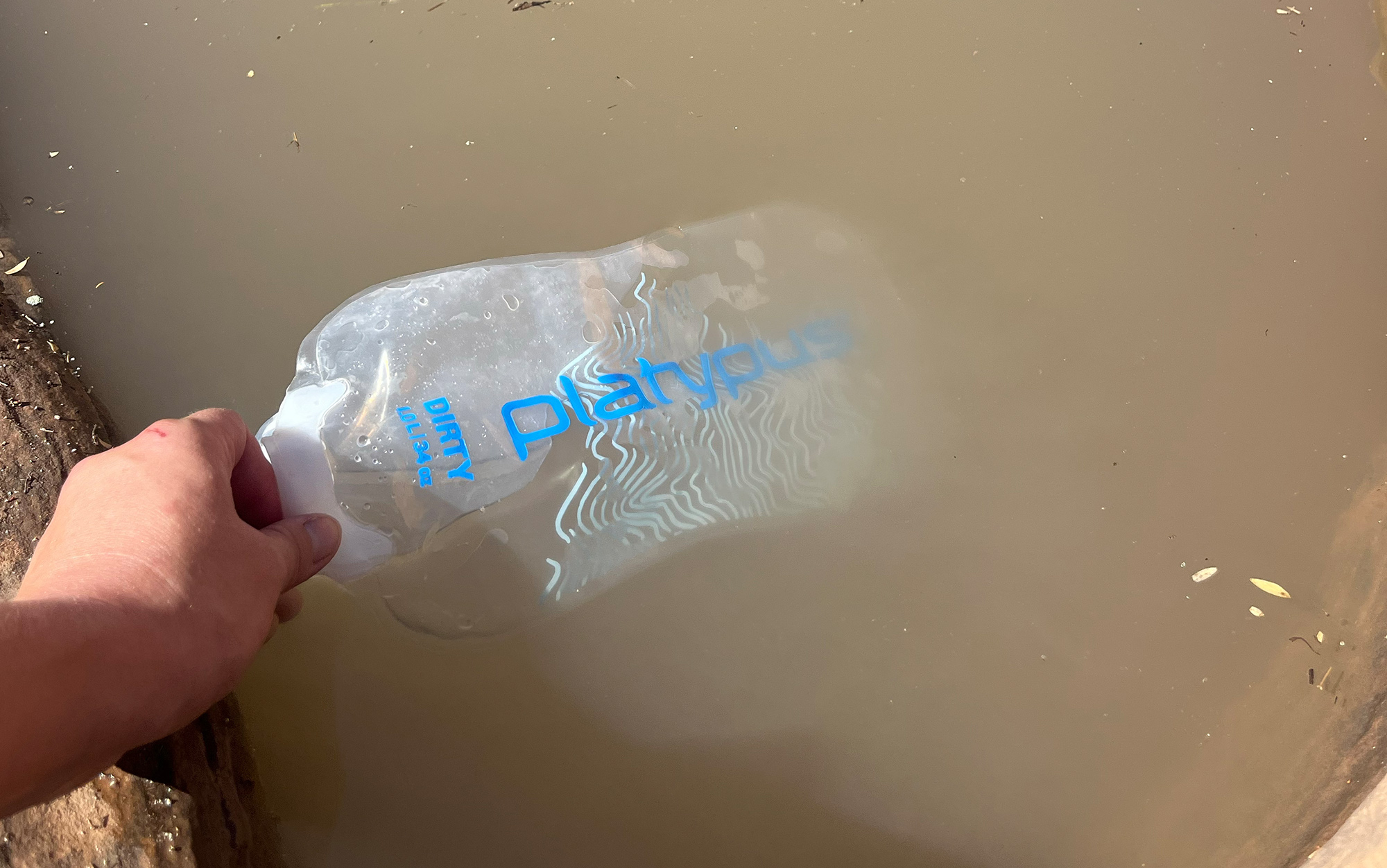
The positives of using the Platypus QuickDraw are the handle on the bag and the ability to use it with other containers like a SmartWater bottle. The liter bag is sturdy and the handle makes it extremely convenient to carry. Though it shares the Sawyer’s finicky filling tendencies, the handle does aid in the scooping motions necessary to fill in standing water. The bag also curves inward in the middle, forming an hourglass shape for easy holding and squeezing.
However, it is a flimsy material that tends to crumple causing it to be more difficult to squeeze out the air and shimmy into your pack’s side pocket. You can roll the bag to remove air and make it more packable but it takes up more space this way, especially with the filter attached to the top. The QuickDraw’s bag also won’t stand upright when it’s full, allowing it to pick up dirt and sand when you lay it on the ground. The QuickDraw is compatible with the Platypus Hoser purchased separately for a larger filtered reservoir.
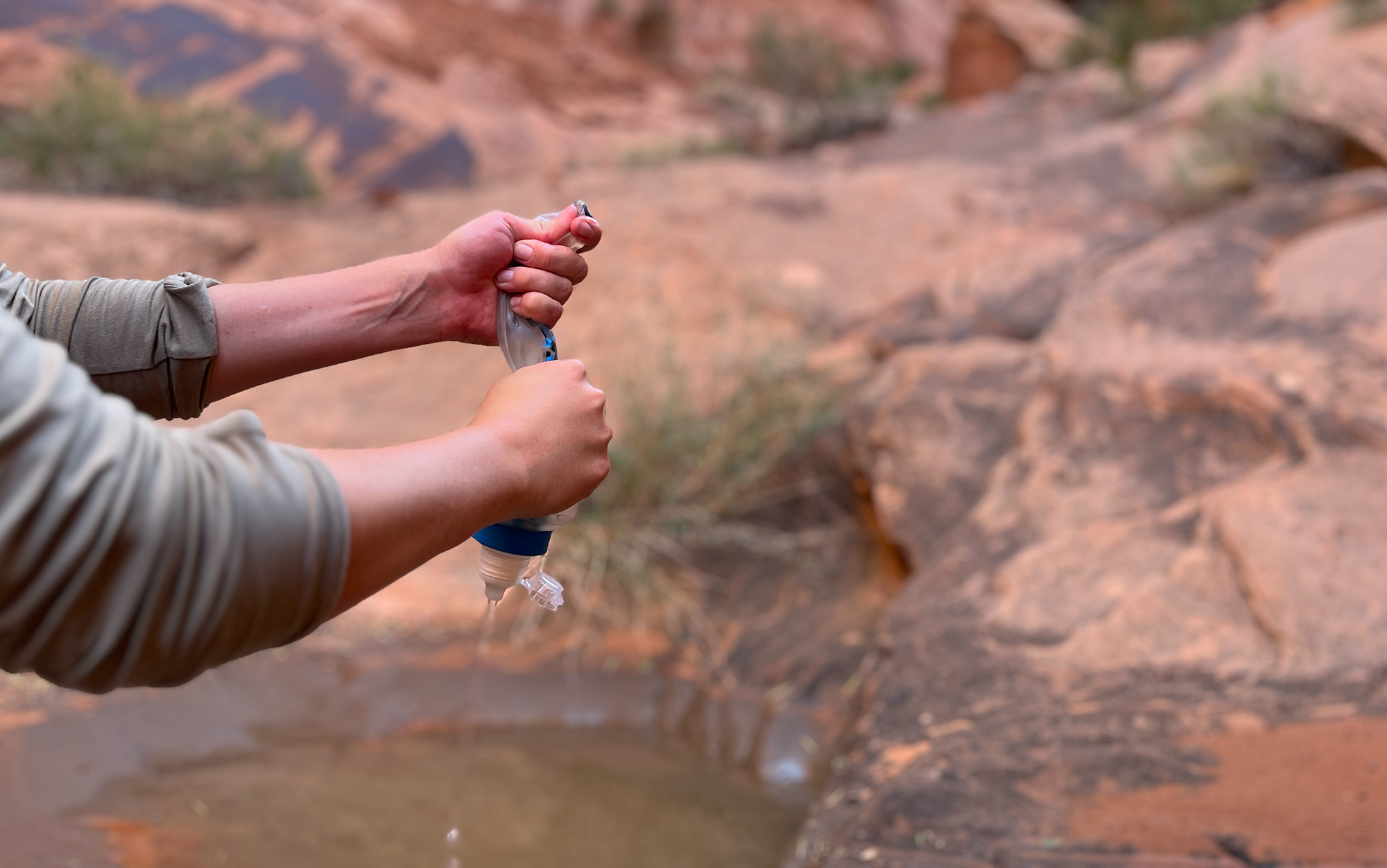
The Katadyn BeFree had the most difficulties in the field. The bag is grippy and dirt tends to stick to it which can fall off into your clean water. You have to use the designated BeFree bag because the filter sits inside the bag instead of outside, so if you forget the bag or it breaks, this filter is useless. This also means that you can’t get all of the water out and some inevitably gets trapped near the filter with no room to squeeze it out.
Filter Comparison
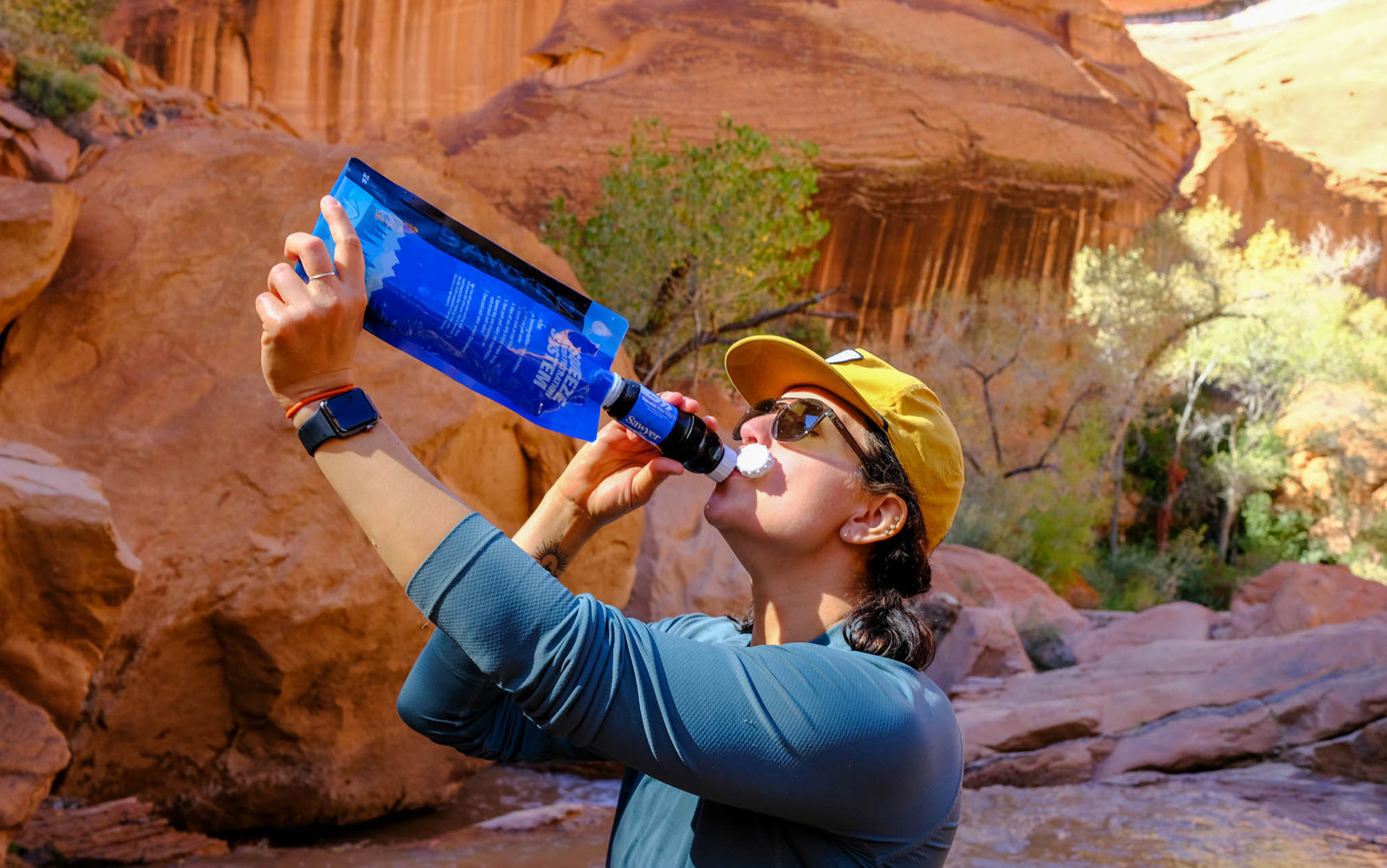
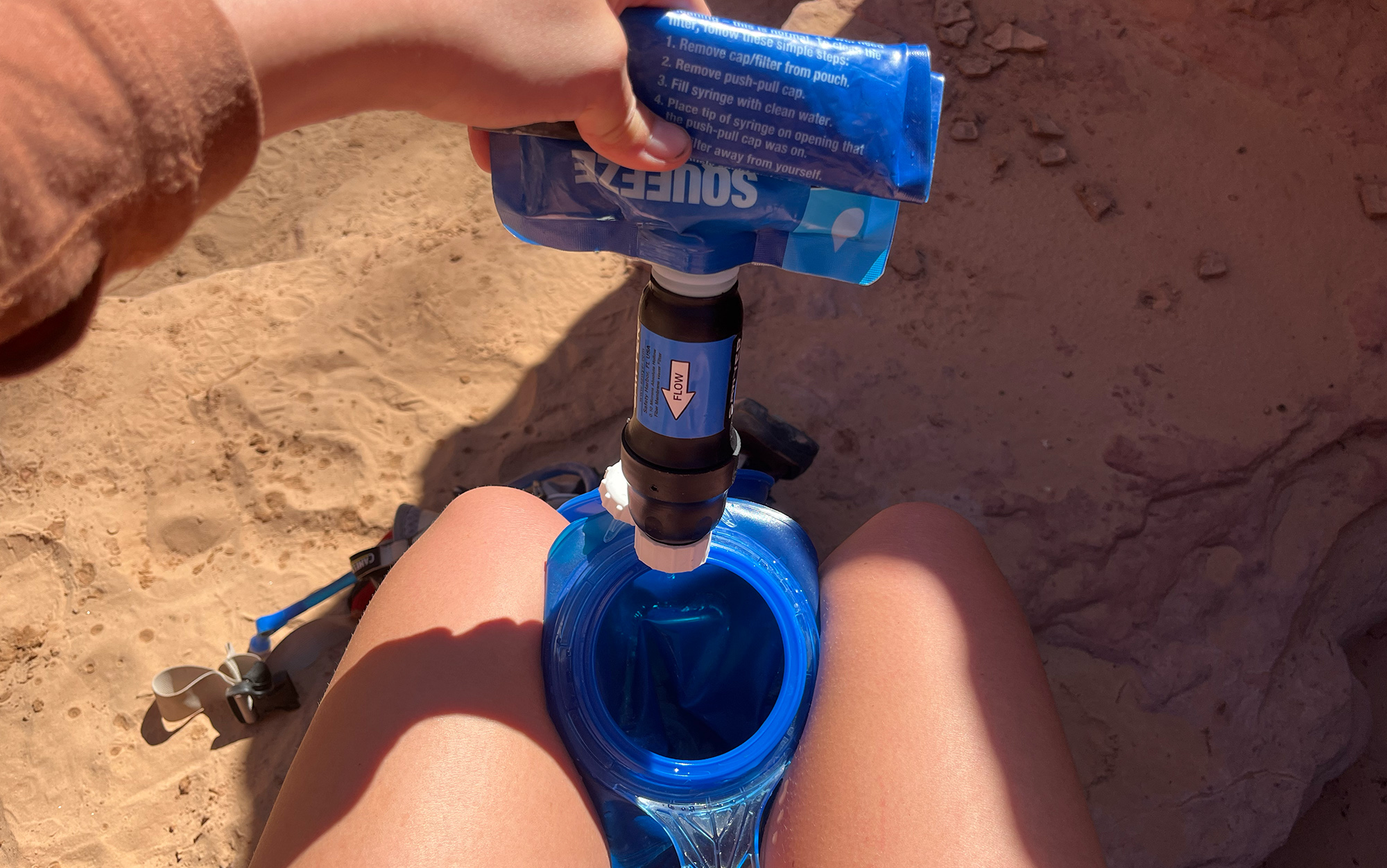
Sawyer sends an extra bag, syringe for backflushing, inline hydration pack adapter, and gravity adapter with this kit. The inline adapter allows you to incorporate your hydration bladder hose with the Sawyer to filter water as you suck. Though you have to cut your hose for this, so it is a commitment. A less permanent adaptation is the gravity filter which enables you to hang a bag of dirty water from a branch and let the water fall through the filter, no squeezing required. You get two nozzles to incorporate the included hose and you can use any bladder or bag to fill with dirty water.
The Sawyer’s versatility, simplicity, and superior bag make this my favorite filter. However, if you over tighten the Sawyer, even a small amount, the O-ring will start to pop out. If you’re guilty of over tightening, you’ll want to keep an eye on your water bag as it sometimes remains there after you unscrew the filter. Mine has fallen into a running stream before and if you lose it, your filter is useless because dirty water can seep out. The Sawyer only needs to be hand tightened and any over-twisting could cause damage. This filter does have a tendency to hold water which makes it heavier after use; mine gained almost 2 ounces. The other filters in this test also gained weight, but only about an ounce.
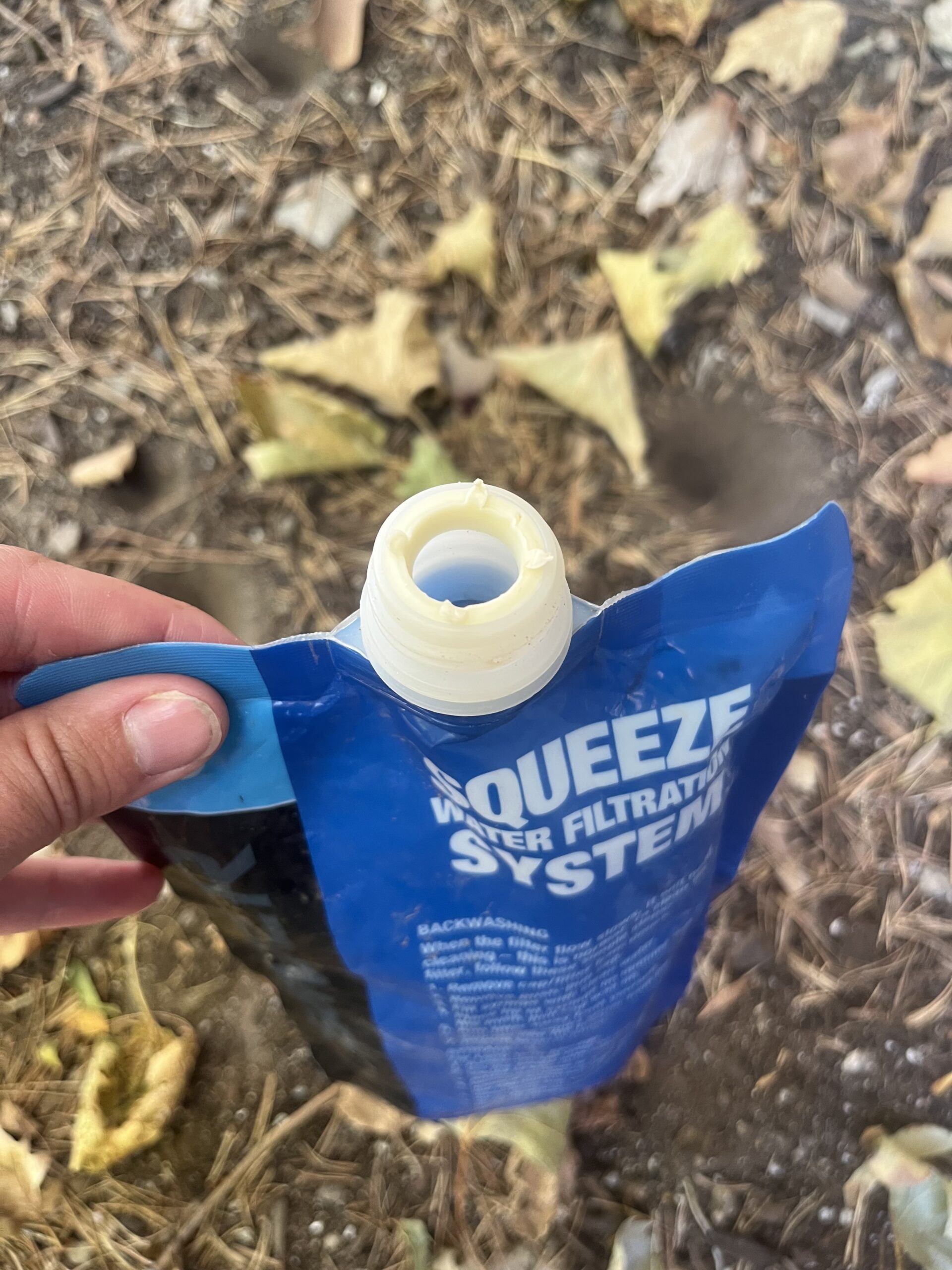
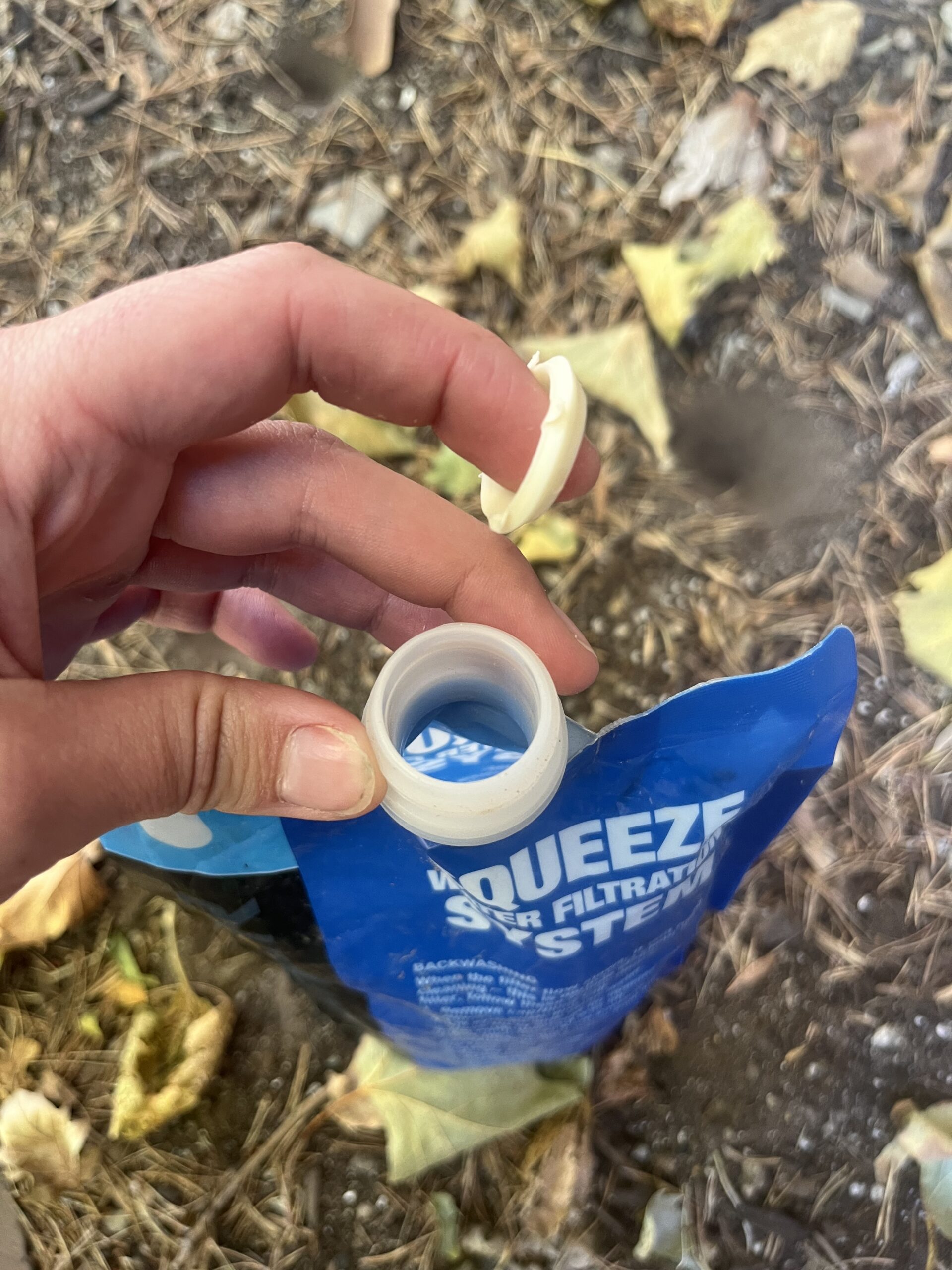
The QuickDraw won the fastest flow award filtering 3 liters per minute. The filter’s initial weight is heavier than the BeFree and the Sawyer, but the flow rate is faster as proved in the larger water filter test. It took 35-40 seconds to filter one liter. Honestly, I’m never going to be concerned about shaving seconds off my filtering time. If I’ve already stopped to filter and unpacked my water reservoir, any of the top three squeeze filters are going to be fast enough for me. It’ll take me more time to fill up the bag and finesse my CamelBak reservoir to sit comfortably between my knees for an optimal filtering angle than it will to squeeze the water through. But if you’re looking purely for speed, this could be the filter for you. The Sawyer only filters 1.7 liters per minute and the Katadyn does 2 liters.
The Katadyn BeFree won the award for best lightweight water filter weighing an ounce less than the other two. However, the BeFree’s filter is exposed so you can’t set it down on the ground while filling the bag without clogging it with dirt or sand. All of the slight inconveniences of the bag and filter add up, prolonging the filtering process. It does work and it is lightweight, but I’d rather pack on another ounce and avoid these annoyances.
Ease of Cleaning Comparison
The Squeeze’s backflushing syringe is another thing you have to carry (at least on longer trips or to areas with particularly silty water), but it makes the Sawyer a breeze to clean.
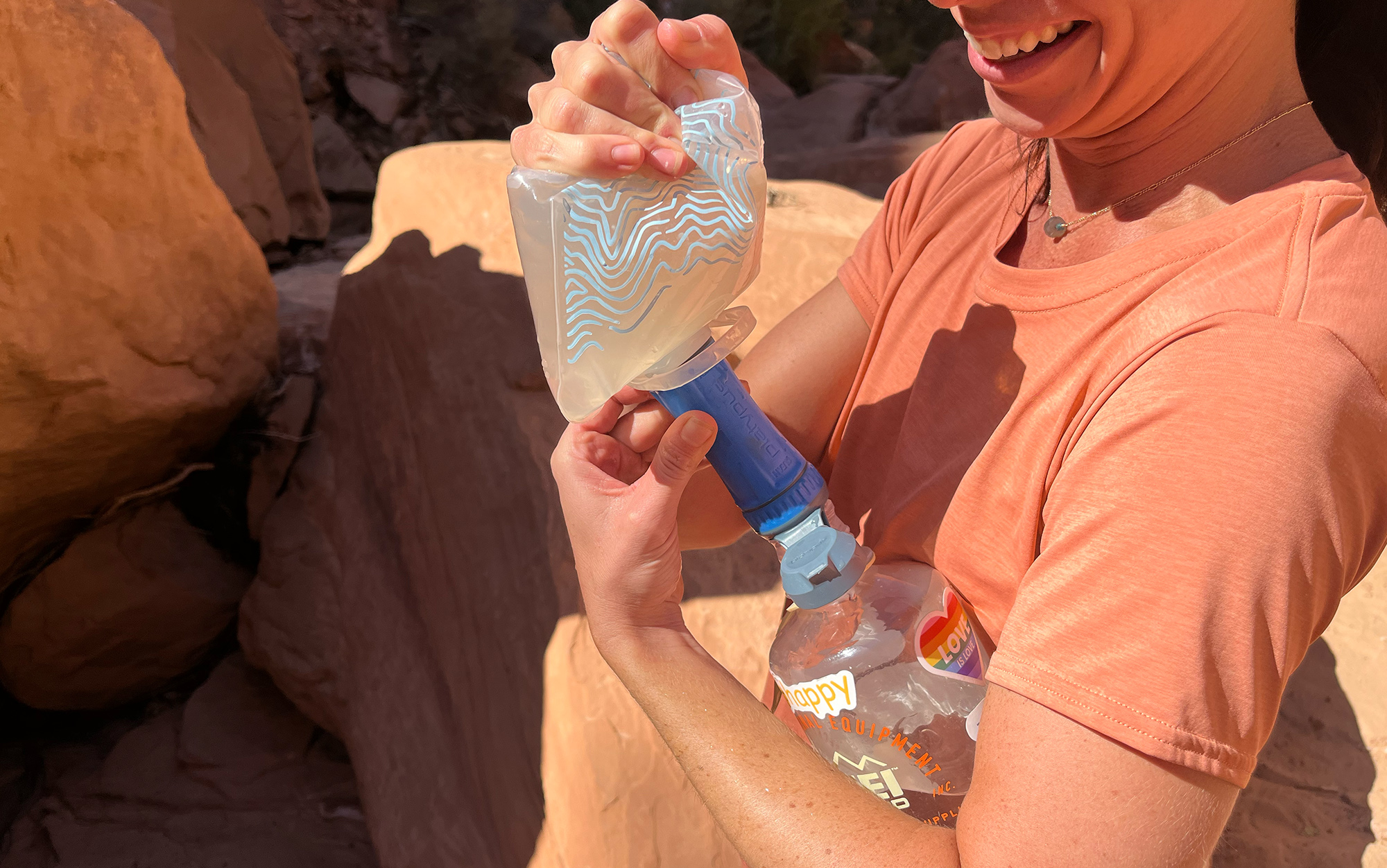
A debatable perk of the Platypus QuickDraw is the tool-free cleaning. The Platypus can be backflushed with a SmartWater bottle. You have to hold the SmartWater bottle’s wider opening firmly against the QuickDraw’s nozzle while forcing water back through the filter. However, it does work and you’ll cut down on weight by leaving the syringe at home if you already have a SmartWater bottle with you. But if you rely on a bladder or Nalgene, you won’t be able to clean this filter in the field.
Katadyn’s BeFree cannot be backflushed, as that will damage the filter. But it can be cleaned without a tool by simply swishing the filter through some clean water or shaking clean water inside the bag. I have some issues with this as you’ll either have to rely on a dirty bag filled with clean water to swish out debris or dig out your cup or pot and fill with clean water to swish the filter through.
How I Tested Backpacking Water Filters
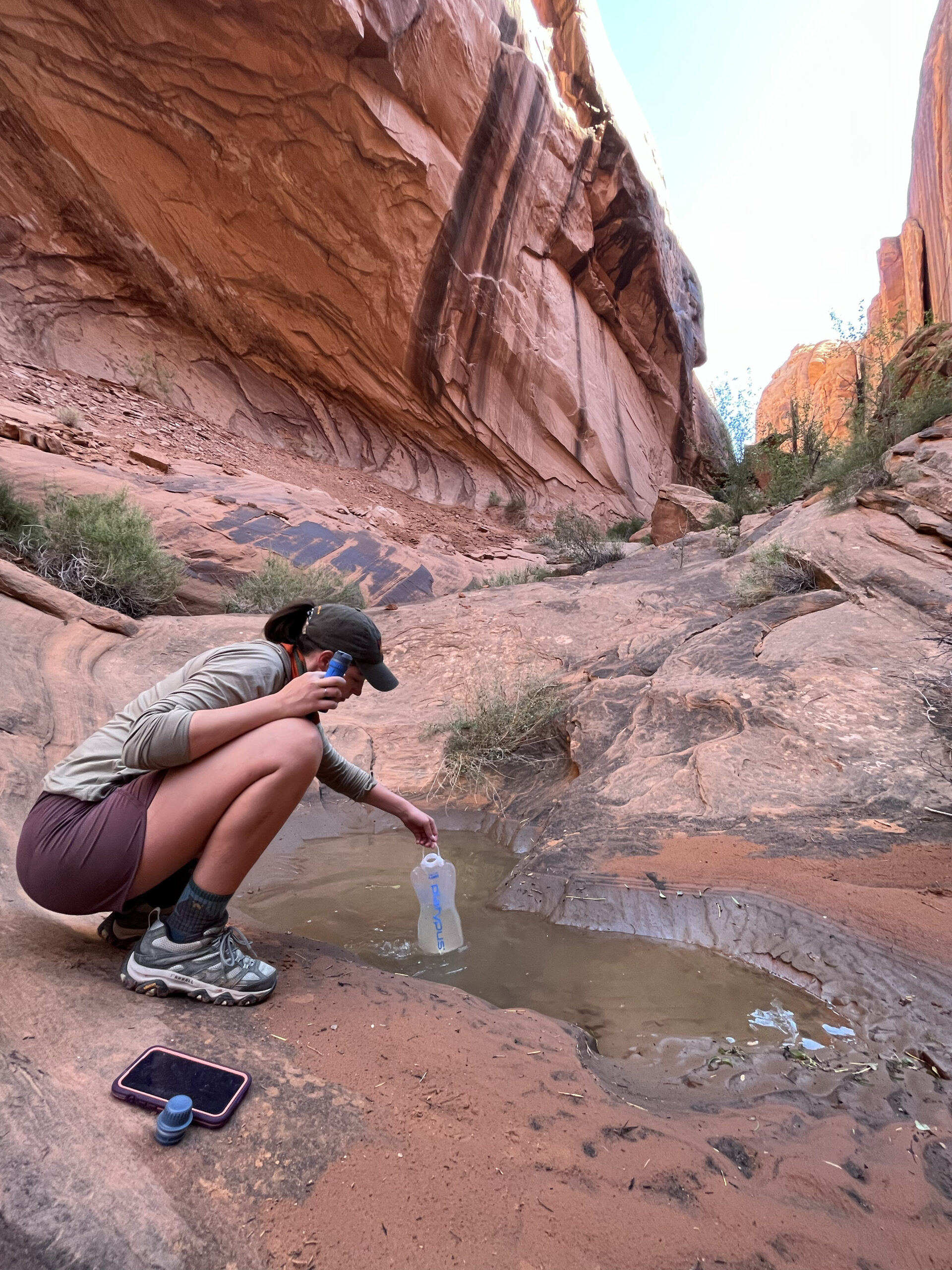
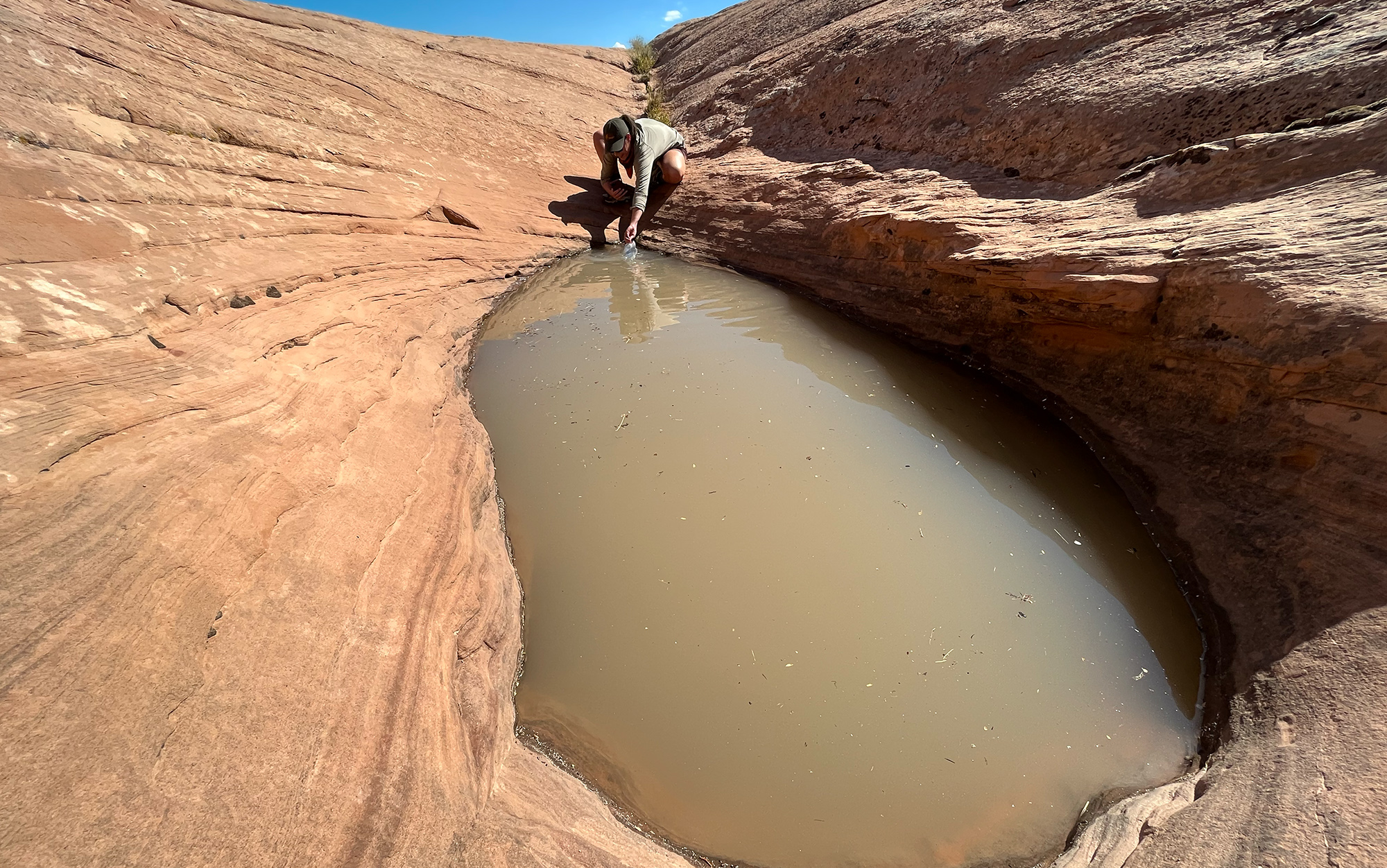
In the more comprehensive water filter test, the products were tasked with purifying scummy, bacteria infested water from a public beach, mucky swamp water, and a river of glacial runoff filled with silt. While all of these sites certainly pushed the filters outside their comfort zones, I wanted a round robin of less-than-ideal water sources. I took these into the desert canyons of Utah in Moab and Escalante. Moab featured standing puddles of muddy and sandy water, left to bake in the sun. Escalante was more forgiving with shallow moving water courtesy of the Escalante river. As these conditions varied from the original test, some of the measured flow times and weights will vary. In both locations, the filters performed admirably with no clogging. However, the efficiency and usability varied more widely than I anticipated amongst the top three backpacking water filters.
Read Next: How Long Can You Survive Without Water?
Final Thoughts
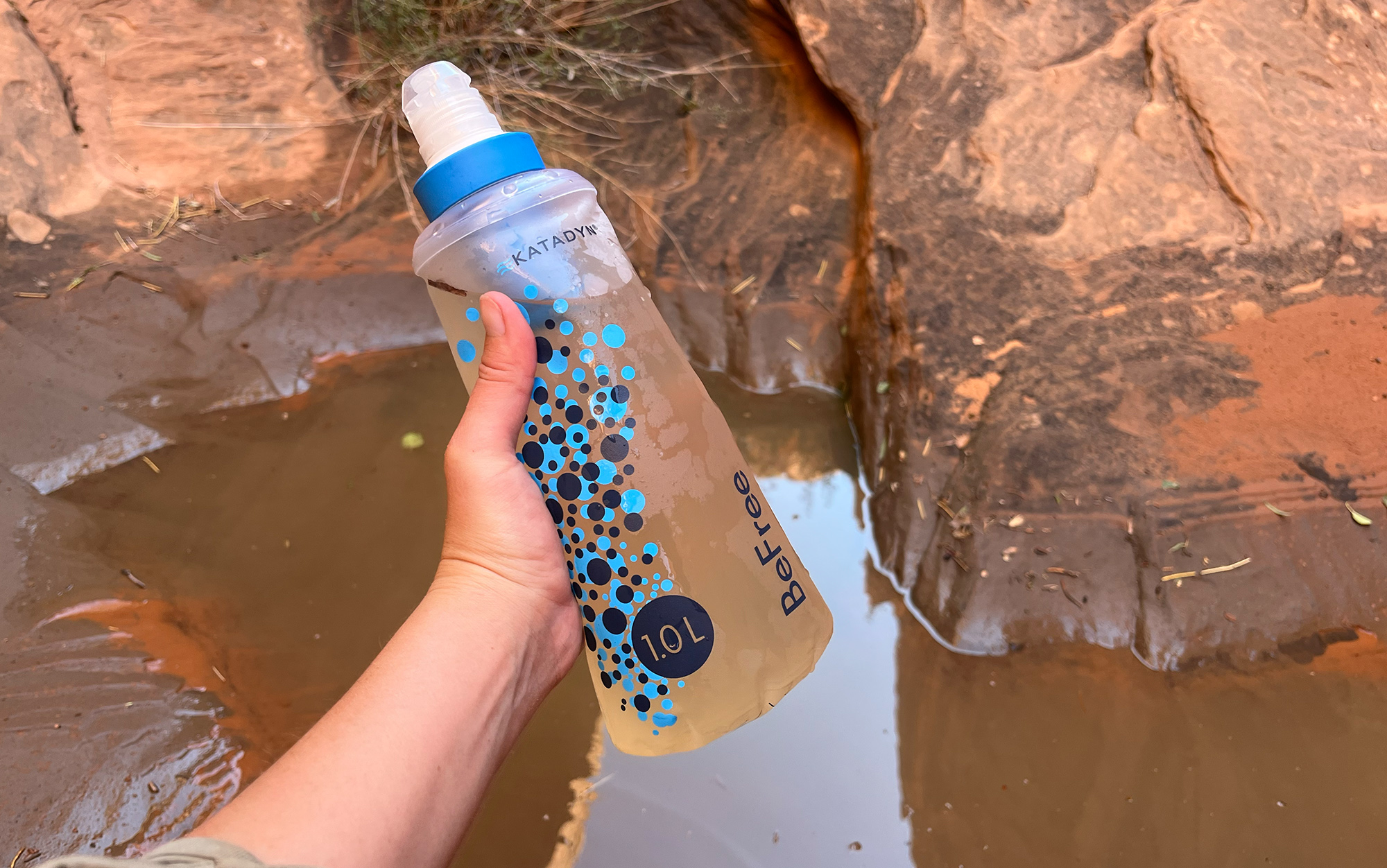
While all of these filters will keep you hydrated when backpacking or hiking, the best water filter is the one that gets this chore over with as quickly as possible with minimal risk of failure. I would recommend the Sawyer Squeeze first as it is the least expensive, can easily be cleaned in the field, and has the most versatility. The Platypus QuickDraw is a close second with a superior flow speed but finicky bag. Katadyn’s BeFree is light and will do the trick, but its internal filter causes more problems than it solves. As we dive into shoulder season and then winter, remember to sleep with your chosen water filter in freezing temperature to avoid the water leftover in your filter freezing, expanding, and ultimately breaking the device.
